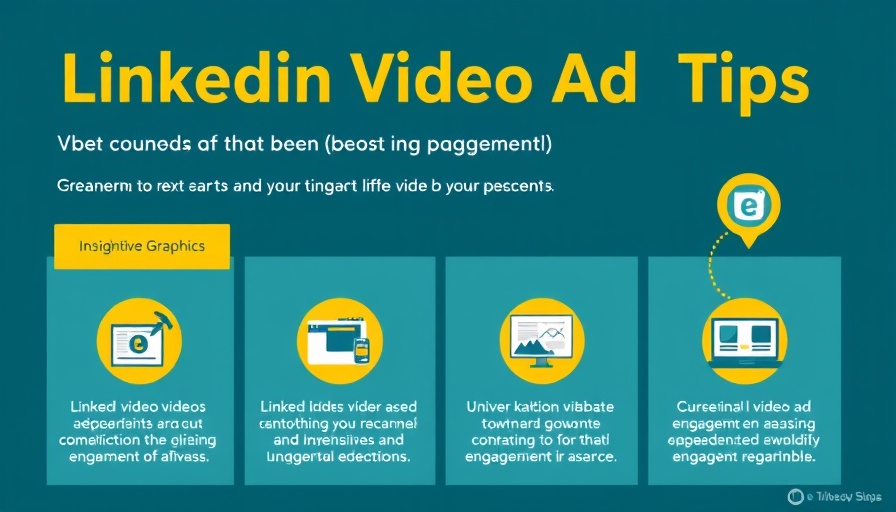
Harnessing Video to Engage Parents on LinkedIn
Video content on LinkedIn is becoming increasingly vital for anyone looking to connect with their audience. Recent trends indicate that video watch time on the platform increased by 36% year-over-year in 2024, signaling a growing appetite for more dynamic content. For parents with children, engaging video content can be especially impactful, offering valuable insights on topics such as screen time management and educational resources.
Why Video? The Power of Engagement
Video posts on LinkedIn are shared 20 times more than any other form of content. This is a crucial factor for parents wanting to discover useful tips about social media safety or educational apps. As video continues to gain traction, not utilizing it within your LinkedIn strategy means missing out on significant opportunities to communicate effectively. Parents are busy and often looking for bite-sized, practical strategies that can help them navigate the many challenges of modern parenting.
Tips for Effective Video Content on LinkedIn
Creating engaging video content is not just about the visuals; it's about resonating with your audience. Here are several tips parents can follow to enhance their engagement:
- Keep It Short and Sweet: Short-form videos are gaining popularity and can deliver messages more quickly, which is crucial for parents juggling multiple responsibilities.
- Focus on Value: Parents appreciate content that is informative, whether it’s tips on managing kids’ screen time or the latest educational apps. Aim for videos that provide clear answers to common questions.
- Use Relatable Scenarios: Showing real-life situations that parents encounter can make your content more relatable. This not only enhances engagement but also builds trust with your audience.
Leveraging Technology for Creative Videos
With advancements in technology, including the rise of generative AI video tools, parents have more options than ever for video creation. While the effectiveness of AI-generated video may vary, it can provide a jumpstart for those who may not have the resources to produce high-quality video content manually.
Future Trends in LinkedIn Video Content
As we move forward, it’s expected that video content will only become more central to personal branding on LinkedIn. For parents, integrating stories that reflect their experiences with education, technology, and parenting can create connections not only on a professional level but also on a personal one.
Common Misconceptions About LinkedIn Video Content
Many parents might think LinkedIn is solely for professionals. However, as more individuals share their personal experiences related to parenting, the platform is evolving into a space for all discussions, including parenting advice and insights on educational tools. Perceiving it as a niche space could prevent them from tapping into this resource.
Actionable Insights for Parents
Engagement shouldn't just be a goal; it should be a process. By employing these strategies, parents can craft video content that resonates with their audience while also fulfilling their personal and professional goals. Regular tracking of engagement metrics will help refine their approach and ensure that their content remains relevant and valuable.
In conclusion, not leveraging video in your LinkedIn strategy is a missed opportunity. As video content thrives, parents can maximize their influence and connect with others by sharing their unique experiences. Whether you're offering parenting tips or strategies for managing screen time, video can help amplify your message.
Take action today! Start brainstorming video ideas that reflect your parenting journey and how they can help others in the LinkedIn community. Your experiences can be the key to connecting with fellow parents.
 Add Row
Add Row  Add
Add 




Write A Comment